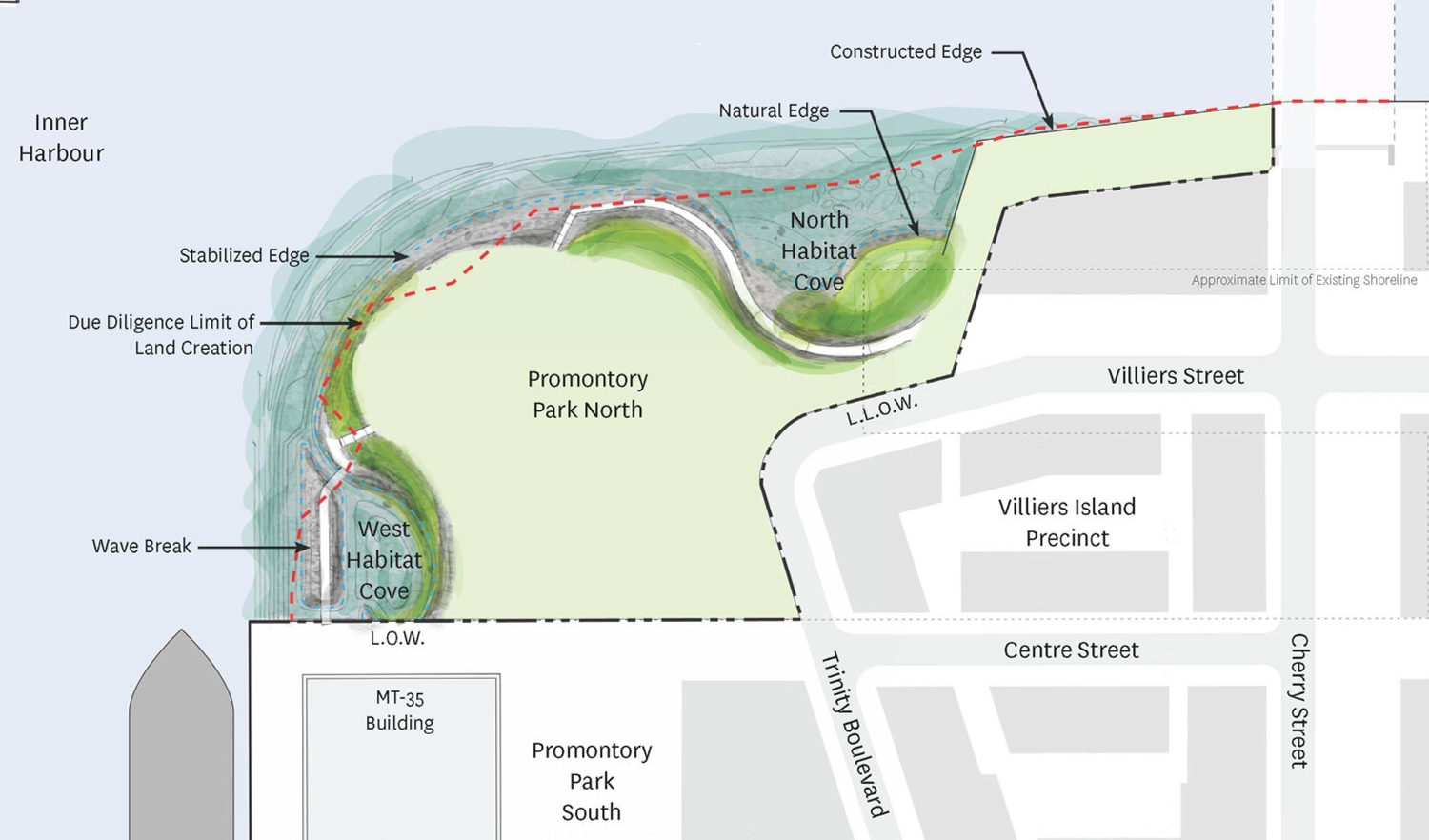Downtown Toronto appears to finally be bouncing back nearly four years after the onset of the pandemic, but it could still be a while before the city returns to its former glory, experts say.
According to research by the University of Toronto’s School of Cities, which has been monitoring cellphone activity in major North American cities since 2020, foot traffic in downtown Toronto between March to mid-June of 2023 was at 70 per cent of pre-pandemic levels.
That’s the highest number of unique visitors seen in Toronto’s downtown core since COVID-19 closed businesses around the globe and changed the nature of in-office work.
“A year-and-a-half ago, we had a range from 30 to 130 per cent. So a vast range of rates. And now cities are all converging to between 50 and 100 per cent, and most of them are around the median of 75,” Karen Chapple, director of the School of Cities, told CTV News Toronto in an interview.
Toronto ranks 45th among the 66 cities featured the latest batch of data. In its last “Downtown Recovery” report, Toronto ranked 55th as cellphone pings remained at about 47 per cent of pre-pandemic levels between December 2022 to February 2023.
By comparison, Mississauga is in 8th place at 91 per cent, Ottawa is in 21st at 82 per cent, and London is in 30th place at 79 per cent.
Chapple has said Toronto’s sluggish “downtown recovery” over the last several years is due, at least in part, to the length and extent of rolling public health lockdowns.
And while an increase in downtown activity is welcomed, she suspects it will take some time for the city to return to 100 per cent.
“There’s so many factors. We’re also thinking about slowing construction rates. And we’ve had a lot of layoffs lately. We’re in a bit of a rough patch in the economy. So I think we’re going to be under 100 per cent for probably the next two or three years. And then I think by that time, we should be able to kind of start to crawl out,” she said.
A crucial element, Chapple said, in getting Toronto back to full strength will be reimagining the offices left vacant by the city’s massive technology and financial services workforce, which has managed to stay productive and profitable with remote and hybrid work.
In a separate analysis conducted by Environics Analytics for CTV News Toronto, data shows that the number of unique workers and daily workers in the downtown core was 34 and 39 per cent of pre-pandemic levels, respectively, from Jan. 1 to June 15 of 2023.
Since the beginning of the pandemic, only half of all office leases in downtown Toronto have come up for renewal, according to Chapple. She said when the leases of the remaining offices come up, the city will have a “chance to turnover.”
“[City council] is studying it, I think, and I think you will see, in the next six months or so, some changes to the policy, and some new ideas come on the table,” she said. “The city’s working on its overall economic strategy. It’s working on the downtown piece, but it can’t just be the city. We have to have the downtown landlords play a role and want to solve the problem.”
In a statement to CTV News Toronto, the City of Toronto said it is “actively planning and delivering” city building and growth strategies in the long and short-term that “aim to bring people to the city to live, visit, do business, work and enjoy Toronto.”
“Through it’s work, the city is deeply committed to driving community vibrancy and diversity, supporting neighbourhood building, unlocking green space, inspiring public art and culture, creating gathering spaces, driving new business development to support more job creation and economic investment, welcoming tourists, major events and conferences, leading major public events and programming for residents, and encouraging more people to walk, bike or ride transit across Toronto, including the downtown core,” the statement read.
TTC RIDERSHIP REMAINS BELOW PRE-PANDEMIC LEVELS
The latest data from the TTC shows that ridership, like downtown Toronto foot traffic, remains below levels seen before the pandemic.
According to a November report, the network transported 41.8 million riders between Aug. 27 and Sept. 30, which represents 78 per cent of the TTC’s pre-pandemic traffic.
The report noted that despite weather events at the beginning of the year which hampered ridership, the number of customers increased afterward and has remained “slightly above budget.”
The TTC has struggled to get people to come back to the transit at levels seen before 2020, with the number of so-called “commuter” riders who use the system every weekday at 57 per cent of pre-pandemic levels. That effort has become even more challenging amid a recent fare increase, a number of high-profile safety incidents, and an aging network overall.
“One of the things that we worry about in terms of mobility here is the fact that not only is this an underbuilt system, underfunded and under resourced, it’s getting older, right and we haven’t put the modernization dollars into it over the decades,” Giles Gherson, President and CEO of the Toronto Region Board of Trade, said in an interview with CTV News Toronto.
Toronto’s transit woes below ground are also being felt on the street and have contributed to what Gherson described as a “congestion crisis.” The problem has become so bad in fact that businesses are struggling to hold meetings and conventions in the city because it’s garnered a bad mobility “reputation.”
“Massive congestion is killing our livability…It’s hurting investment, it’ hurting tourism, and it’s making people really frustrated. But really what it’s hurting is the willingness of employees come downtown to work.”
Gherson said the new funding deal between the city and the province, which features $758 million for 55 new subway trains on Line 2 contingent on matching funds from the federal government, is a “significant win” for the city and hopes Ottawa will come to the table.
TORONTO TOURISM STILL DOWN 10-15 PER CENT
Kathy Motton is the senior manager of corporate communications at Destination Toronto and said tourism in the city is still about 10 to 15 per cent away from where it was pre-pandemic.
“We’ve got a couple of key markets that have not yet returned,” she said in an interview with CTV News Toronto. “China, for example, hasn’t returned, and China actually brought around 300,000 visitors a year to Toronto before 2019.”
Like Gherson, Motton explained that business events have yet to return in full force and the city is only seeing about 60 per cent of the traffic related to those conventions that it used to.
But the city is still welcoming tourists in the millions annually, and the missing 10 to 15 per cent appears to be shrinking.
According to Destination Toronto’s market performance dashboard, there were 8.18 million visitors to the city in 2023 – more than two million more arrivals than in 2022 and triple what it saw in 2021.
In terms of dollars and cents, the data shows visitors spent $6.34 billion during their trips this year.
While it’s unclear when Toronto tourism will return to 100 per cent, Motton believes that when that does happen, so to will the “vibrancy” she says has been missing in the city.
“The visitors are a part of what makes our city so great. As Torontonians, we could see that during the pandemic, when we were missing those visitors and there was less of the international markets coming in,” she said. “When we fully return, we’re going to feel the full return of the vibrancy and I think we already see that at 85 per cent.”



 Maziar Moini, Broker of Record - Home Leader Realty Inc.
300 Richmond St. W., #300, Toronto, ON M5V-1X2
Maziar Moini, Broker of Record - Home Leader Realty Inc.
300 Richmond St. W., #300, Toronto, ON M5V-1X2

